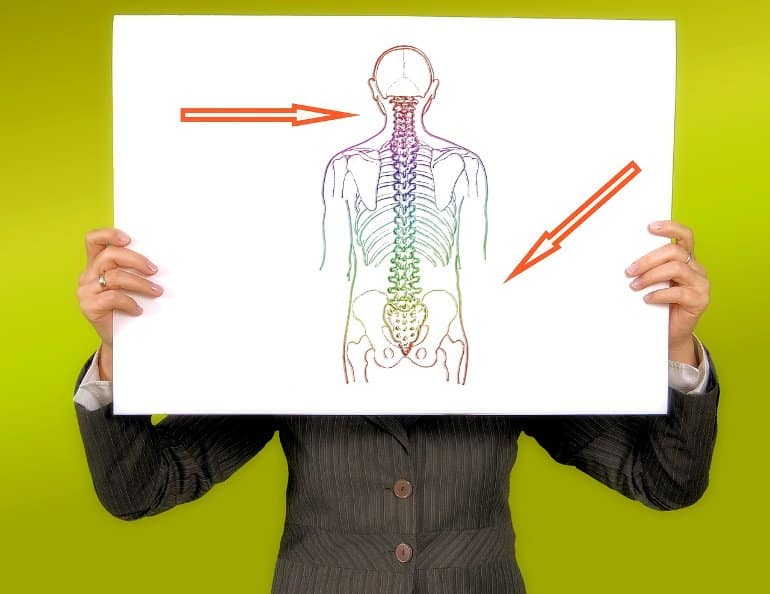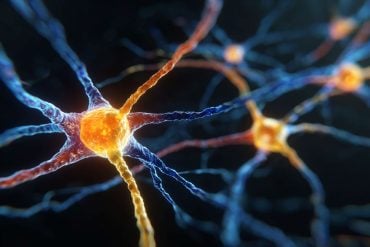Summary: Nerve stimulation therapy has shown promise in the treatment of spinal cord injuries in animal models. Researchers hope the treatment will be used in humans with SCI to help restore movement to limbs.
Source: Columbia University
In 1999, when Jason Carmel, MD, Ph.D., was a second-year medical student at Columbia, his identical twin brother suffered a spinal cord injury, paralyzing him from the chest down and limiting use of his hands.
Jason Carmel’s life changed that day, too. His brother’s injury ultimately led Carmel to become a neurologist and a neuroscientist, with the goal of developing new treatments to restore movement to people living with paralysis.
Now, a nerve stimulation therapy that Carmel is developing at Columbia is showing promise in animal studies and may eventually allow people with spinal cord injuries to regain function of their arms.
“The stimulation technique targets the nervous system connections spared by injury,” says Carmel, a neurologist at Columbia University and NewYork-Presbyterian, “enabling them to take over some of the lost function.”
In recent years, some high-profile studies of spinal cord electrical stimulation have allowed a few people with incomplete paralysis to begin to stand and take steps again.
Carmel’s approach is different because it targets the arm and hand and because it pairs brain and spinal cord stimulation, with electrical stimulation of the brain followed by stimulation of the spinal cord.
“When the two signals converge at the level of the spinal cord, within about 10 milliseconds of each other, we get the strongest effect,” he says, “and the combination appears to enable the remaining connections in the spinal cord to take control.”
In his latest study, Carmel tested his technique—called spinal cord associative plasticity (SCAP)—on rats with moderate spinal cord injuries. Ten days after injury, the rats were randomized to receive 30 minutes of SCAP for 10 days or sham stimulation. At the end of the study period, rats that received SCAP targeted to their arms were significantly better at handling food, compared to those in the control group, and had near-normal reflexes.
“The improvements in both function and physiology persisted for as long as they were measured, up to 50 days,” Carmel says.
The findings, published recently in the journal Brain, suggest that SCAP causes the synapses (connections between neurons) or the neurons themselves to undergo lasting change. “The paired signals essentially mimic the normal sensory-motor integration that needs to come together to perform skilled movement,” says Carmel.
From mice to people
If the same technique works in people with spinal cord injuries, patients could regain something else they lost in the injury: independence. Many spinal cord stimulation studies focus on walking, but “if you ask people with cervical spinal cord injury, which is the majority, what movement they want to get back, they say hand and arm function,” Carmel says.
“Hand and arm function allows people to be more independent, like moving from a bed to a wheelchair or dressing and feeding themselves.”

Carmel is now testing SCAP on spinal cord injury patients at Columbia, Cornell, and the VA Bronx Healthcare System in a clinical trial sponsored by the National Institute of Neurological Disorders and Stroke.
The stimulation will be done either during a clinically indicated surgery or noninvasively, using magnetic stimulation of brain and stimulation of the skin on the front and back of the neck. Both techniques are routinely performed in clinical settings and are known to be safe.
In the trial, the researchers hope to learn more about how SCAP works and how the timing and strength of the signals affect motor responses in the fingers and hands. This would lay the groundwork for future trials to test the technique’s ability to meaningfully improve hand and arm function.
Looking farther ahead, the researchers think that the approach could be used to improve movement and sensation in patients with lower-body paralysis.
In the meantime, Jason Carmel’s twin is working, married, and raising twins of his own. “He has a full life, but I’m hoping we can get more function back for him and other people with similar injuries,” says Carmel.
About this spinal cord injury research news
Author: Press Office
Source: Columbia University
Contact: Press Office – Columbia University
Image: The image is in the public domain
Original Research: Closed access.
“Spinal cord associative plasticity improves forelimb sensorimotor function after cervical injury” by Ajay Pal et al. Brain
Abstract
Spinal cord associative plasticity improves forelimb sensorimotor function after cervical injury
Associative plasticity occurs when two stimuli converge on a common neural target. Previous efforts to promote associative plasticity have targeted cortex, with variable and moderate effects. In addition, the targeted circuits are inferred, rather than tested directly. In contrast, we sought to target the strong convergence between motor and sensory systems in the spinal cord.
We developed spinal cord associative plasticity, precisely timed pairing of motor cortex and dorsal spinal cord stimulations, to target this interaction. We tested the hypothesis that properly timed paired stimulation would strengthen the sensorimotor connections in the spinal cord and improve recovery after spinal cord injury. We tested physiological effects of paired stimulation, the pathways that mediate it, and its function in a preclinical trial.
Subthreshold spinal cord stimulation strongly augmented motor cortex evoked muscle potentials at the time they were paired, but only when they arrived synchronously in the spinal cord. This paired stimulation effect depended on both cortical descending motor and spinal cord proprioceptive afferents; selective inactivation of either of these pathways fully abrogated the paired stimulation effect. Spinal cord associative plasticity, repetitive pairing of these pathways for 5 or 30 min in awake rats, increased spinal excitability for hours after pairing ended.
To apply spinal cord associative plasticity as therapy, we optimized the parameters to promote strong and long-lasting effects. This effect was just as strong in rats with cervical spinal cord injury as in uninjured rats, demonstrating that spared connections after moderate spinal cord injury were sufficient to support plasticity. In a blinded trial, rats received a moderate C4 contusive spinal cord injury. Ten days after injury, they were randomized to 30 min of spinal cord associative plasticity each day for 10 days or sham stimulation.
Rats with spinal cord associative plasticity had significantly improved function on the primary outcome measure, a test of dexterity during manipulation of food, at 50 days after spinal cord injury. In addition, rats with spinal cord associative plasticity had persistently stronger responses to cortical and spinal stimulation than sham stimulation rats, indicating a spinal locus of plasticity.
After spinal cord associative plasticity, rats had near normalization of H-reflex modulation. The groups had no difference in the rat grimace scale, a measure of pain.
We conclude that spinal cord associative plasticity strengthens sensorimotor connections within the spinal cord, resulting in partial recovery of reflex modulation and forelimb function after moderate spinal cord injury. Since both motor cortex and spinal cord stimulation are performed routinely in humans, this approach can be trialled in people with spinal cord injury or other disorders that damage sensorimotor connections and impair dexterity.






